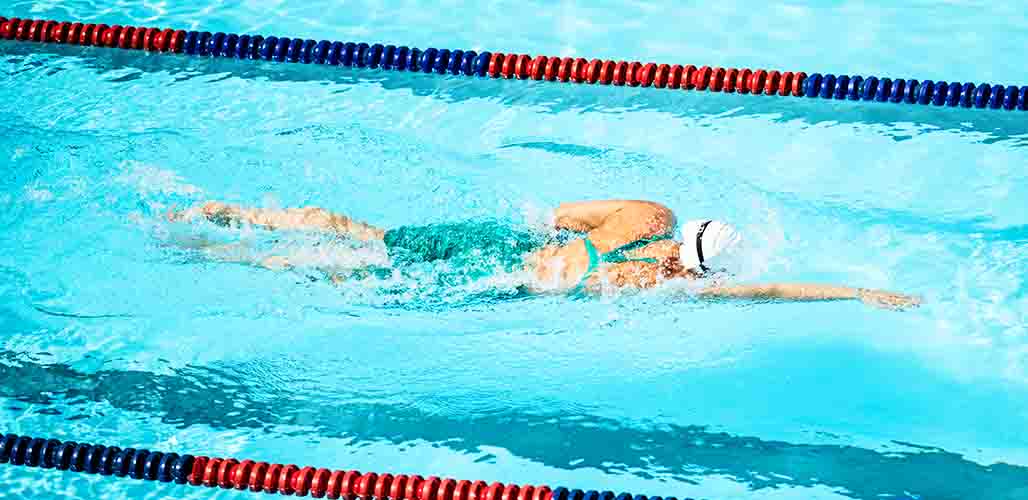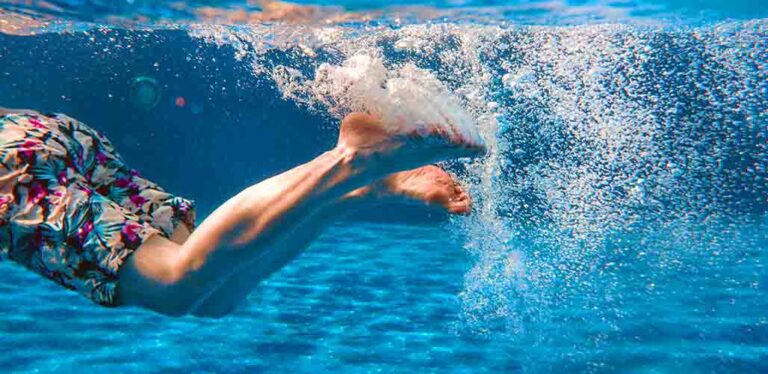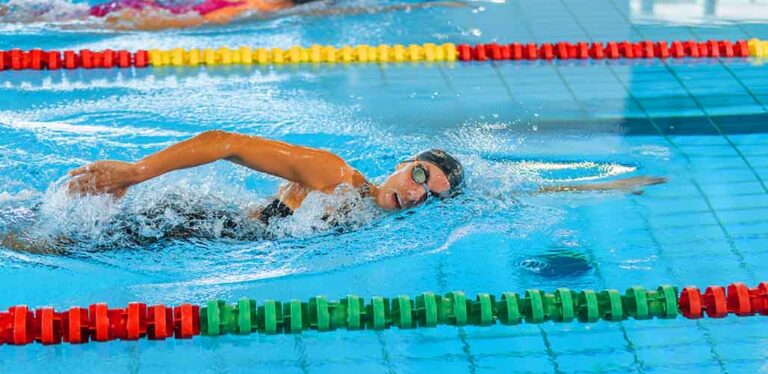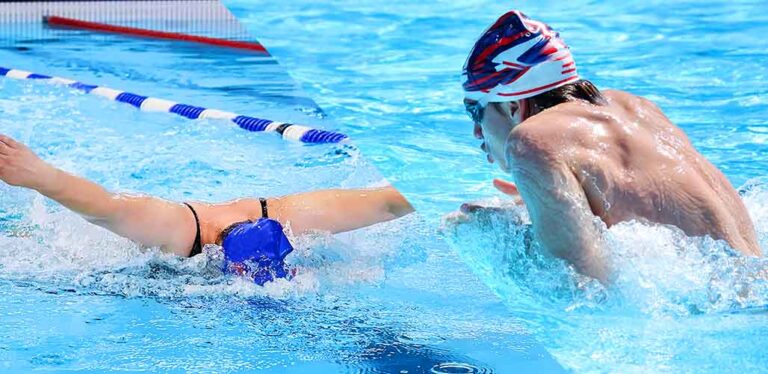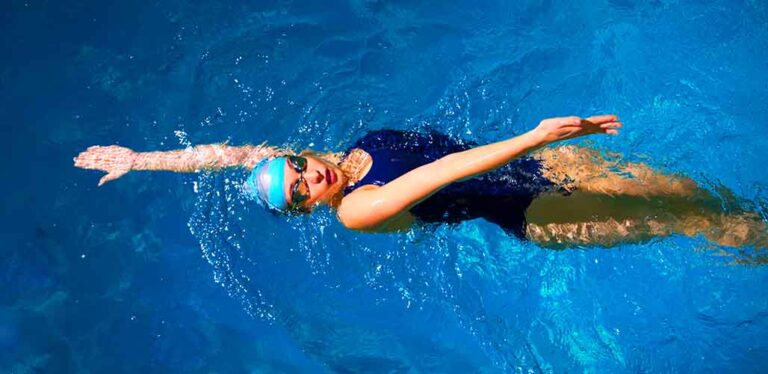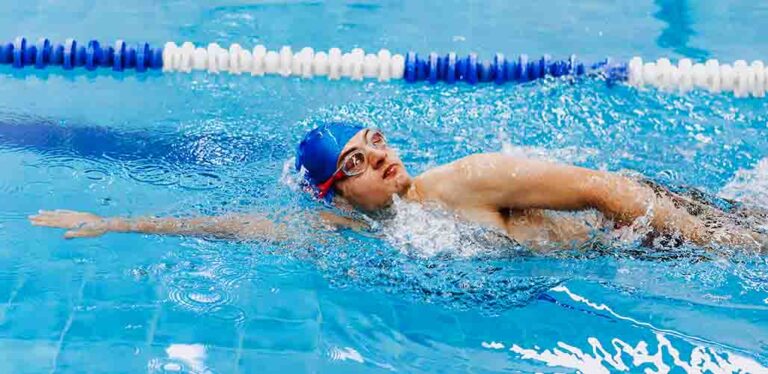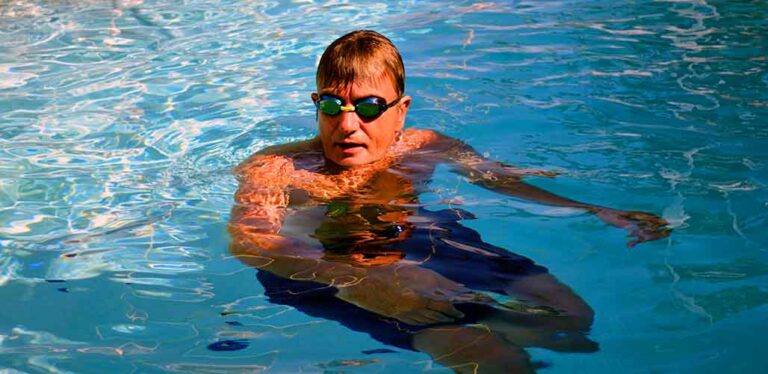Why is My Freestyle Kick So Slow?
Why is my freestyle kick so slow? Freestyle is one of my favorite swimming strokes for a fast, high intensity workout. But, it can be hard to perfect, especially to get the speed you need. Freestyle kicks could be slow because of the equipment you’re choosing to wear or the technique you use. So, in this guide, I’ll take a closer look at the changes you can make to make your freestyle kick faster and more efficient, including some drills you can do to improve your kick technique.
Contents
- Why is my freestyle kick so slow?
- Why do I need to improve my freestyle kick?
- How can I improve my freestyle kick?
- Drills to improve your freestyle kick
- How do I know if I’m getting faster?
Why is My Freestyle Kick So Slow?
Because everyone is different, it’s important not to compare yourself to others when it comes to the speed of your swimming. We all have different fitness and stamina levels. You aren’t naturally going to swim as fast as a competitive swimmer, especially if you’re just starting out. So, time your own swimming and use that as a measure of how you’re progressing, rather than comparing yourself to strangers in the pool.
Despite this, it’s natural to want to swim faster. Particularly if you struggle with a certain stroke. The main reason why your freestyle kick might be slow is because of the drag created by your body and clothing. To swim faster, you will need to reduce the drag on your body by wearing a more streamlined swimsuit and by shaving your body hair.
Another reason could be that you’re not using the right muscles. Make sure to engage your quads and glutes when you kick. Lastly, make sure you’re not kicking too high as this will only slow you down. Putting in the time practicing and training your freestyle kick will go a long way to helping to increase your speed.
Why Do I Need to Improve My Freestyle Kick?
Being able to kick is not just a way to give your arms and shoulders a break from pulling the weight of your body through the water. A fast and efficient freestyle kick can actually make up for a less-than-perfect arm stroke. This is why world-class swimmers like Michael Phelps and Ryan Lochte have such powerful kicks.
A strong freestyle kick gives you added propulsion which in turn results in a faster swimming speed. In addition, it also helps you maintain a good body position and keeps your legs from sinking.
Lastly, having a strong freestyle kick can help you swim with better technique. This is because you’re able to keep your body more horizontal. You get a better chance of using less energy to move through the water. Freestyle is quite a tiring stroke, so perfecting your kick will make the overall stroke easier.
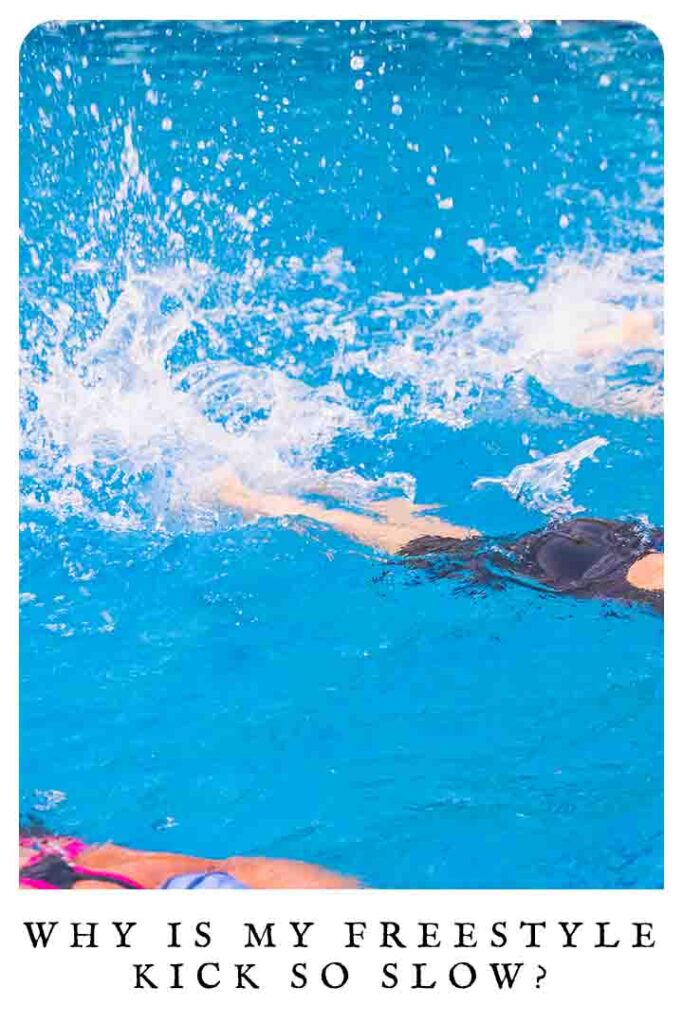
How Can I Improve My Freestyle Kick?
But now that you know how important that freestyle kick is, here is the big question – how can I improve my freestyle kick? There are a few things you can do to improve your freestyle kick. Let’s dive straight in and find out more.
1. Work on Your Ankle Strength and Flexibility
You need your ankles stronger and more flexible to develop a fast and powerful freestyle kick. This is because a large portion of the power for your kick comes from your ankles. When you’re kicking, your ankles should point your toes so that you can create a large surface area to push against the water.
There are a couple of things you can do to work on your ankle strength and flexibility. One of them is adding skipping to your warm-up and dryland workouts. This is a great way to work on your ankle flexibility as well as your calf muscles. Another thing you can do is practice kicking with a resistance band around your ankles. This will help you build up the muscles and improve the range of motion in your ankles.
2. Use a Kickboard
A kickboard is a great tool to help you improve your freestyle kick. When you use a kickboard, you’re able to focus on kicking without having to worry about your arms and breathing. This allows you to really work on developing a strong and fast kick.
To use a kickboard, simply place it in front of you and hold onto the edges. Then, kick your legs in an alternating fashion. Make sure to keep your knees straight and engage your quads and glutes with each kick.
3. Pay Attention to Your Up and Down Movements
Both downward and upward movements are important for effective kicking. When you’re kicking downward, you should be able to extend your leg fully so that your toes point. This maximizes the surface area that you’re using to push against the water.
On the upward movement, make sure that you’re not kicking too high. Kicking too high will only slow you down. Instead, focus on keeping your leg close to your body and keeping a strong contraction in your quads.
4. Position Your Body
How you position your body determines how well you’re able to kick. Remember, you want to keep your body as horizontal as possible in the water. This will help you reduce drag and swim faster. To do this, make sure that you’re not arching your back when you kick. Instead, keep your spine straight and engage your abs so that your body stays in a straight line.
Your head position also plays a role in how effective your kick is. When you keep your head in a neutral position, it helps you maintain a more horizontal body position. This, in turn, makes it easier for you to generate power with your kick.
5. Time Your Kicks
While no rules determine the number of kicks you should take per stroke, there is ideal timing for your kicks. In general, you want to take one kick for every two arm strokes. This means that if you’re taking four strokes with your arms, you should take two kicks.
The timing allows you to generate the most power with each kick while still staying in a good rhythm. It also helps you maintain a more horizontal body position.
Drills to Speed Up Your Freestyle Kick
Learning some drills is a great way to help you focus on your kick and make improvements. One of the best kicking drills is the flutter kick with a resistance band. To do this drill, wrap a resistance band around your ankles and then perform a flutter kick – on dry land! The band will add resistance to your kicks and force you to work harder. This is a great way to build up strength and power in your kick, and you can do it anywhere in your home.
Another good drill is the four-beat kick. This drill is similar to the flutter kick, but you take four kicks for every two arm strokes. This helps you practice timing your kicks and also forces you to really focus on generating power with each one.
And finally, the superman drill is a great way to work on your body position. To do this drill, float on your stomach with your arms extended in front of you. Then, kick your legs and reach your arms forward at the same time. The superman drill will help you practice keeping a good body line while you’re kicking.
How Do I Know if I’m Getting Faster?
The best way to see if you’re actually improving is to time your freestyle speeds over the same distance. Try not to compare yourself to other people, since everyone’s fitness journey is different. And, remain consistent in your training sessions. Consistency and hard work is the best way to see good results in time. Just make sure you’re also eating well and getting plenty of rest between swims.
In Summary: Why is My Freestyle Kick So Slow?
Many factors can contribute to a slow freestyle kick. Poor technique, lack of strength and power, and incorrect body position. However, with some practice and dedicated focus, you can make improvements to your kick and swim faster.
You should also understand that improving your kicks is not something reserved for professional swimmers. In fact, even beginner swimmers can make significant improvements with some practice. So, don’t get discouraged if your kick isn’t where you want it to be. Just keep working at it and you’ll see gradual improvements over time.

